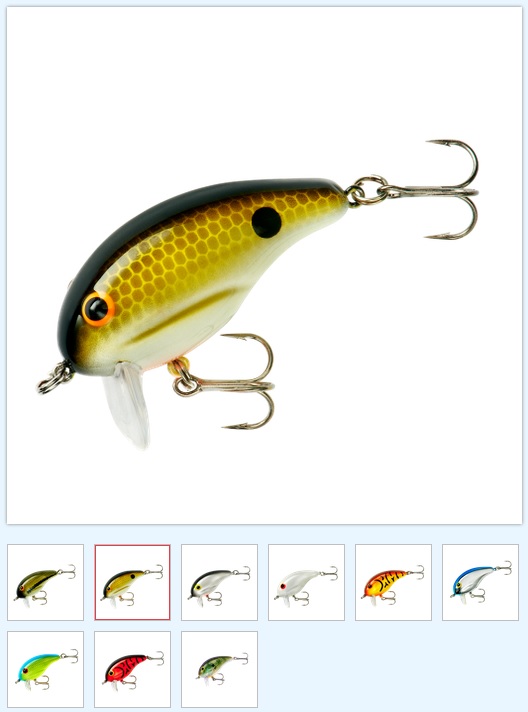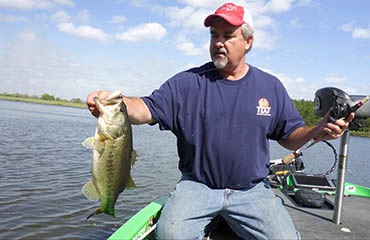 It’s all about the hesitation for tournament pro Pete Ponds. His default presentation for a Bandit Footloose is to repeatedly “pump” his rod. After casting, he’ll pull the lure with a steady sideways sweep of the rod, reel quickly to regain line while returning the rod to its starting position, and then pump it again.
It’s all about the hesitation for tournament pro Pete Ponds. His default presentation for a Bandit Footloose is to repeatedly “pump” his rod. After casting, he’ll pull the lure with a steady sideways sweep of the rod, reel quickly to regain line while returning the rod to its starting position, and then pump it again.
“At the end of the pump is when you usually get hit,” Ponds said. “Fish follow it, and when it hesitates or moves a little differently, they hit it.”
There is no defined pause between pumps to make lure pop all the way back to the surface. However, the lure naturally hesitates ever so slightly, and it rises just a bit when Ponds brings the rod forward. That little change in cadence and rise create a major strike-triggering mechanism, much like bumping cover with a lure and causing it to kick out.
 In truth, Ponds uses a sideways pumping presentation for a lot of his crankbait fishing. If he’s not bumping a bunch of cover, he’s usually pumping the rod to create that broken action, and whether he’s working a Footloose a foot beneath the surface or a Bandit 300 a dozen feet deep, the hesitation is the primary strike-triggering mechanism.
In truth, Ponds uses a sideways pumping presentation for a lot of his crankbait fishing. If he’s not bumping a bunch of cover, he’s usually pumping the rod to create that broken action, and whether he’s working a Footloose a foot beneath the surface or a Bandit 300 a dozen feet deep, the hesitation is the primary strike-triggering mechanism.
So what’s the takeaway? Simple. Don’t hesitate to hesitate your presentation any time you are cranking, and when you do hesitate, be ready for a strike.

